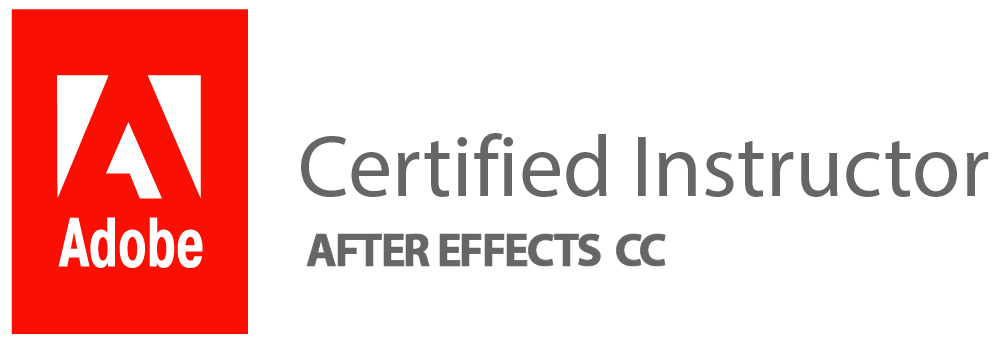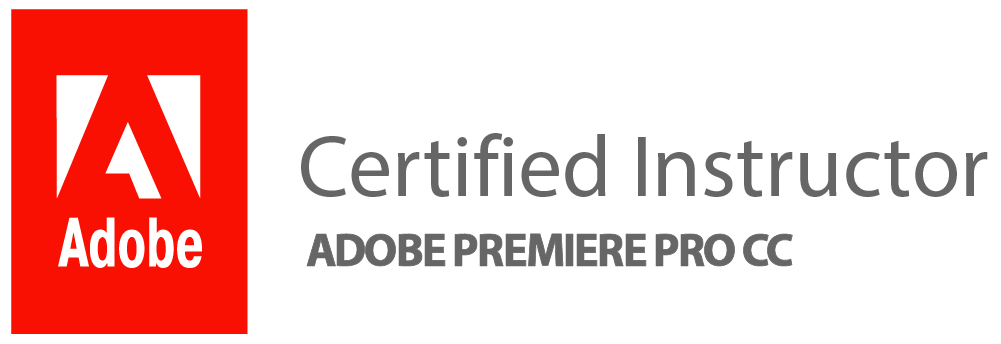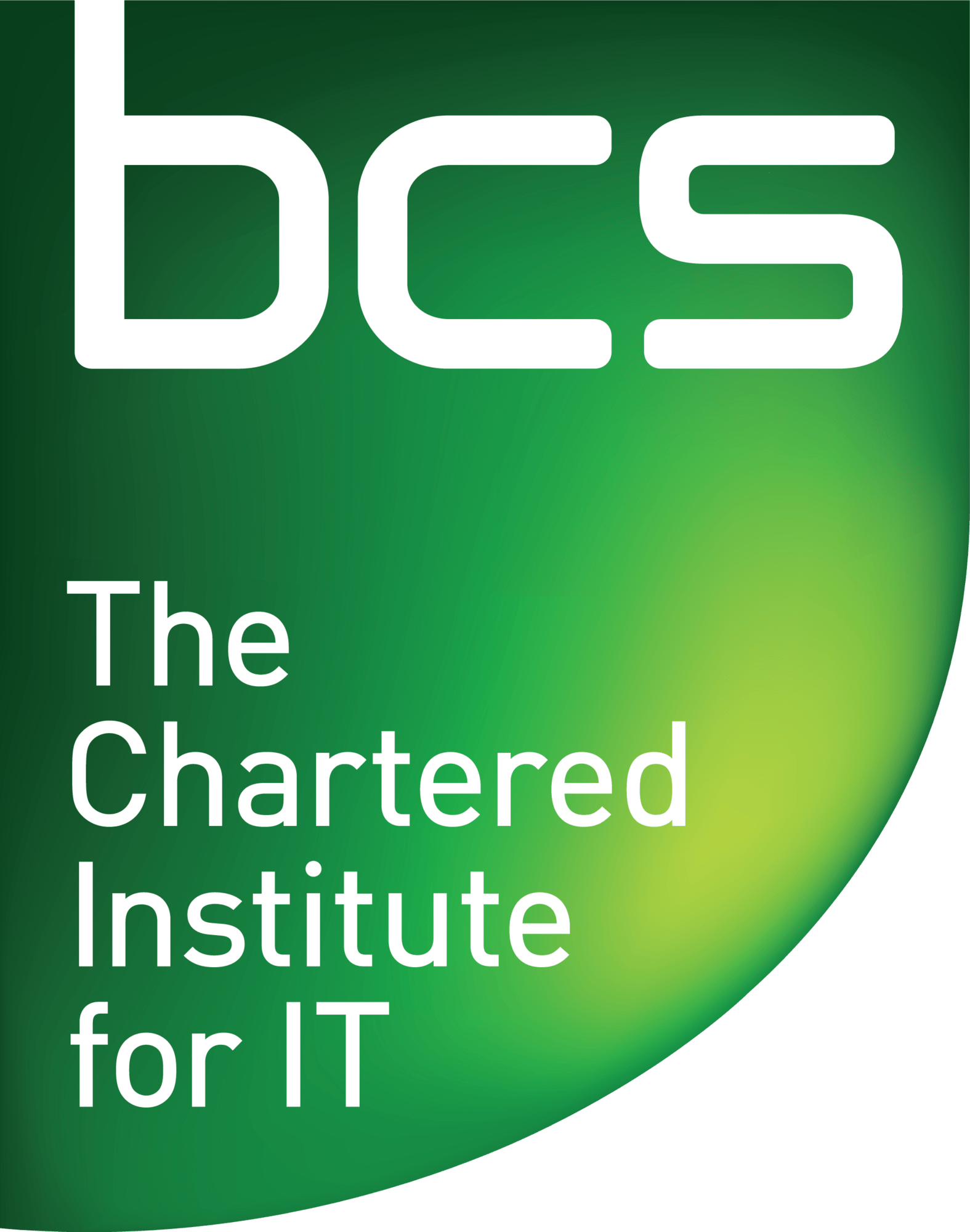What Are The Different Types Of Digital Artists? How Does Someone Become A Digital Artist?
In a graphic design course, students study various aspects of this creative field. They learn about the history and evolution of graphic design, understanding how it has shaped different industries over time. Students also delve into the principles and elements of design, such as colour theory, typography, composition, and layout. These fundamentals are crucial in creating visually appealing and effective designs.
Moreover, students explore different software tools used in graphic design, like Adobe Photoshop, Illustrator, and InDesign. They gain hands-on experience in using these programs to create digital artwork and designs. Additionally, they develop skills in traditional techniques such as drawing and sketching to further enhance their creativity.
Furthermore, a graphic design course covers topics like branding and logo design. Students learn how to create unique visual identities for businesses or organizations by incorporating various elements of design that reflect their values and message. They also study advertising and marketing strategies to communicate effectively through visuals. Overall, a graphic design course provides students with a comprehensive understanding of this dynamic field while honing their artistic skills.
Design principles:
Design principles are fundamental concepts and guidelines that graphic designers follow when creating visual materials. These principles serve as the foundation for effective design, ensuring that the final product is visually appealing, functional, and communicates its intended message. One key principle is balance, which involves distributing elements evenly throughout a design to create a sense of equilibrium. Another important principle is contrast, which refers to the juxtaposition of different elements to create visual interest and make certain elements stand out.
Additionally, designers also consider the principle of hierarchy when organizing information in their designs. Hierarchy helps guide viewers’ attention by prioritizing certain elements over others based on their importance or significance. This can be achieved through variations in size, colour, or typography. Furthermore, designers rely on the principle of proportion to establish relationships between different elements in a design. Proportion ensures that each element is appropriately sized relative to others so that they harmonize together.
By understanding and applying these design principles during their graphic design courses, students gain insight into how to create aesthetically pleasing and visually impactful designs. They learn how these principles work together to enhance communication and effectively convey messages through visuals. Additionally, studying these principles allows students to develop critical thinking skills necessary for problem-solving in various design contexts. Overall, learning about design principles equips students with crucial knowledge and skills needed for success in the field of graphic design.
Typography and layout:
Typography and layout are two fundamental aspects of graphic design that students study in a graphic design course. Typography refers to the art and technique of arranging type, while layout refers to the arrangement of elements on a page or screen. In a graphic design course, students learn about the different types of typefaces, their characteristics, and how to choose appropriate fonts for various projects. They also learn about typographic hierarchy, which involves organizing text in a way that emphasizes important information and creates visual interest.
Layout is another important aspect of graphic design that students study in depth. They learn about the principles of visual organization, such as balance, alignment, proximity, repetition, and contrast. Students explore how these principles can be used to create visually appealing compositions that effectively communicate messages. They also learn about grid systems and how to use them as a framework for designing layouts.
Understanding typography and layout is crucial for graphic designers as they play a vital role in enhancing readability and conveying information effectively. By studying these areas in-depth during their coursework, students gain valuable skills that allow them to create well-designed visuals that capture attention and engage viewers.
Colour theory and composition:
Colour theory and composition are essential components of a graphic design course. In this course, students learn about the principles of colour theory, including the colour wheel, complementary colours, and colour harmonies. They study how different colours interact with one another and how to create visually appealing designs by using appropriate colour combinations.
Furthermore, students also delve into the concept of composition in graphic design. They explore various techniques for arranging elements on a page or screen to achieve balance, unity, and visual interest. This includes learning about the rule of thirds, hierarchy, symmetry/asymmetry, and whitespace. By understanding these principles of composition, designers can effectively communicate their message and guide the viewer’s eye through their designs.
In combination with other design elements such as typography and imagery, a comprehensive understanding of colour theory and composition allows graphic designers to create impactful visuals that effectively convey messages or evoke desired emotions. These skills are crucial for creating professional-looking designs that stand out in today’s competitive market across various mediums, such as print media, digital platforms, or even motion graphics.
Digital tools and software:
In a graphic design course, students will often learn about various digital tools and software that are essential for their field. These tools and software enable designers to create visually appealing and professional-looking designs. One of the most commonly used digital tools in graphic design is Adobe Photoshop. This powerful software allows designers to manipulate images, adjust colours, add effects, and create complex compositions.
Another important digital tool for graphic designers is Adobe Illustrator. This software is specifically designed for creating vector graphics, which are scalable images that can be resized without losing quality. Illustrator offers a wide range of tools and features for creating logos, icons, illustrations, and other graphical elements. Furthermore, students may also learn about other graphic design software such as InDesign for layout design and Premiere Pro or After Effects for video editing and motion graphics.
Overall, learning how to use these digital tools and software is crucial for aspiring graphic designers as it equips them with the necessary skills to bring their creative ideas to life in a professional manner.
Project-based learning:
In a graphic design course, students learn a variety of skills and techniques that are essential for success in the industry. One of the main focuses of the course is to develop strong visual communication skills. This includes understanding how to effectively use typography, colour theory, and layout principles to create visually appealing and impactful designs.
Another important aspect of studying graphic design is learning how to use design software and tools effectively. Students will become proficient in programs such as Adobe Photoshop, Illustrator, and InDesign, which are commonly used in the industry. They will also learn about different file formats and how to prepare their designs for print or web.
Additionally, project-based learning is an integral part of a graphic design course. Through hands-on projects, students have the opportunity to apply what they have learned in a practical setting. These projects often involve designing logos, branding materials, websites, posters, or packaging. This allows students to develop their creativity while also gaining valuable experience working on real-world design briefs.
Graphic Designer
In a graphic design course, students are introduced to the fundamental principles and elements of design. They learn about colour theory, typography, layout composition, and visual hierarchy. Understanding these basic concepts is crucial for creating visually appealing and effective designs.
Moreover, students also delve into the world of digital tools and software used in graphic design. They become proficient in using industry-standard programs such as Adobe Photoshop, Illustrator, and InDesign. Through hands-on projects and assignments, they gain practical experience in manipulating images, creating vector graphics, designing logos, and producing print materials like brochures or posters.
Additionally, a graphic design course often includes modules on branding and logo design. Students learn how to develop a brand identity by creating unique logos that reflect the essence of a company or product. They explore different techniques for designing memorable logos that can effectively communicate a brand’s values and message to its target audience. Overall, studying graphic design equips individuals with the necessary skills to create visually stunning designs across various mediums while understanding the importance of effective communication through visual elements.
Graphic Designer & Brand Designer
In a graphic design course, students can expect to study a wide range of topics that are essential for becoming a successful graphic designer. One of the key areas of focus is learning the fundamentals of design principles, such as colour theory, typography, composition, and layout. Students learn how to effectively use these elements to create visually appealing designs that convey a specific message or evoke certain emotions.
Another important aspect of studying graphic design is gaining proficiency in various software tools and technologies commonly used in the industry. Students learn how to use programs like Adobe Photoshop, Illustrator, and InDesign to manipulate images, create illustrations and logos, and design layouts for print or digital media. They also learn about web design and user experience (UX) principles to create engaging websites and interactive experiences.
Furthermore, students delve into the world of branding during their graphic design course. They explore how brands communicate their identity through visual elements such as logos, colour schemes, fonts, and overall brand aesthetic. They learn how to develop cohesive brand identities that resonate with target audiences and effectively represent a company’s values and goals. Overall, studying graphic design equips students with both the technical skills and creative thinking necessary for designing impactful visuals across various mediums.
Brand Designer & Illustrator
In a graphic design course, aspiring brand designers and illustrators learn a wide range of skills and techniques to develop their craft. They delve into the fundamentals of design principles, such as colour theory, typography, composition, and layout. Understanding these foundational elements is crucial for creating visually appealing and effective designs.
Additionally, students in a graphic design course explore various software tools that are commonly used in the industry. They learn how to use programs like Adobe Photoshop, Illustrator, and InDesign to create digital illustrations and graphics. These software skills are essential for executing professional-level designs and collaborating with clients or colleagues.
Furthermore, students also study the importance of research and conceptual thinking in graphic design. They learn how to conduct market research to understand target audiences better and use this information to inform their design decisions. Moreover, they are taught how to brainstorm ideas creatively by generating multiple concepts before refining them into a final design solution.
Overall, studying graphic design provides brand designers & illustrators with the necessary knowledge and skills to create compelling visual identities for businesses or individuals while incorporating their unique artistic style.
What Are The Most Common Mistakes & How Can You Avoid Them When Working On A Graphic Design Project?
In a graphic design course, students study various aspects of the field to develop their skills and knowledge. The curriculum typically covers principles of design, including colour theory, typography, composition, and visual hierarchy. Students also learn about different software tools used in graphic design, such as Adobe Photoshop and Illustrator.
Additionally, a graphic design course may focus on understanding the target audience and how to effectively communicate messages through visuals. Students explore different techniques for creating logos, illustrations, branding materials, and web designs. They gain practical experience by working on real-world projects and learning how to collaborate with clients or team members.
Moreover, students are taught about the importance of research and conceptualization in the design process. They are encouraged to think critically and creatively when developing ideas for projects. Throughout the course, they receive feedback from instructors that helps them refine their skills and improve their ability to meet client expectations.
Overall, studying graphic design involves both theoretical knowledge and hands-on practice to ensure students can create visually appealing designs that effectively communicate messages in various media platforms.
What Will You Study At Our Graphic Design School?
In a graphic design course at our school, you will study a wide range of topics to equip you with the necessary skills and knowledge for a successful career in this field. One of the main areas of focus will be visual communication, where you will learn how to effectively convey messages using various design elements such as colour, typography, and layout. You will also explore different design principles and techniques that are essential for creating compelling designs.
Additionally, our graphic design program emphasizes creativity and innovation. You will have the opportunity to develop your artistic abilities and explore different styles and approaches in your work. Through hands-on projects and assignments, you will learn how to generate unique ideas, think critically about design problems, and come up with creative solutions.
Moreover, our curriculum includes courses on digital tools and software commonly used in the industry. You will gain proficiency in programs like Adobe Photoshop, Illustrator, and InDesign, which are essential for creating digital designs. These technical skills are highly valued by employers in the graphic design field and will enhance your ability to bring your creative vision to life digitally.
Overall, studying graphic design at our school offers a comprehensive education that covers both theoretical concepts and practical skills necessary for success in this dynamic field. By the end of your program, you will have developed a strong portfolio showcasing your versatility as a designer across various mediums, including print media, web graphics, branding materials, and more.
What Do Designers Need To Consider To Use Colour Successfully?
In a graphic design course, students learn various aspects of design, including the effective use of colour. Designers need to consider several factors to use colour successfully in their work. Firstly, they must understand colour theory and how different colours interact with one another. This includes knowledge of the colour wheel, complementary colours, and colour harmonies.
Secondly, designers need to consider the psychological impact of different colours on their audience. Certain colours evoke specific emotions and can influence how people perceive a design or brand identity. For example, warm colours like red and orange often convey energy and excitement, while cool colours like blue and green are associated with calmness and tranquillity.
Lastly, designers need to think about accessibility when using colour in their designs. They should ensure that the chosen colour palette is inclusive for individuals with visual impairments or colour blindness by considering contrast ratios between foreground and background elements.
By taking these factors into account, designers can create visually appealing designs that effectively communicate messages to their intended audience.
Digital Artist
In a graphic design course, students will learn the fundamentals of design principles and elements. They will delve into topics such as colour theory, composition, typography, and layout. The course will also cover software skills essential for digital artists, including Adobe Photoshop, Illustrator, and InDesign.
Furthermore, students will be introduced to the concept of branding and its importance in design. They will learn how to create effective logos and visual identities for businesses or organizations. Understanding user experience (UX) design is another crucial aspect covered in the course. Students will gain knowledge on how to create intuitive interfaces that enhance user interaction with digital products.
Additionally, students may explore more specialized areas within graphic design, such as web design or motion graphics. Web design focuses on creating visually appealing websites while considering usability and functionality aspects. Motion graphics involve designing animated visuals used in videos or presentations.
Overall, a graphic design course provides aspiring digital artists with a comprehensive foundation in both traditional and modern techniques necessary to succeed in this dynamic field.
How Do Graphic Designers Select The Right Colours For A Project?
In a graphic design course, students learn various aspects and techniques related to the field. One of the essential skills taught is colour theory, which helps designers understand how colours work together and evoke different emotions or moods. By studying colour theory, graphic design students gain knowledge about hue, saturation, value, complementary colours, analogous colours, and more.
Moreover, graphic design courses also focus on teaching students how to select the right colours for specific projects. Designers are encouraged to consider factors such as the target audience’s preferences and cultural associations with certain colours. They also learn about colour psychology and how different hues can influence viewers’ perceptions and reactions. Additionally, graphic design courses often teach practical techniques like using colour swatches or creating mood boards to visually explore various colour combinations before finalizing their choices.
Overall, studying graphic design involves an in-depth exploration of colour theory and its practical applications in selecting appropriate hues for different projects. Through understanding the principles of colour harmony and psychology, designers can effectively communicate their desired messages through visual elements while capturing the attention of their intended audience.
How Do Colour Schemes Affect Branding And Identity Design?
In a graphic design course, students learn about the various aspects of design principles and techniques. They gain knowledge and skills in areas such as typography, layout design, image editing, illustration, and branding. One important aspect that is covered in these courses is the study of colour theory and its application in branding and identity design.
Colour schemes play a crucial role in creating a brand’s visual identity. Different colours evoke different emotions and have distinct meanings associated with them. Understanding the psychology behind colours helps designers choose the right colour scheme to effectively communicate a brand’s message or values. For example, warm colours like red or orange can convey energy and excitement, while cool colours like blue or green can create a sense of calmness or trust.
By carefully selecting colour schemes for their designs, graphic designers can help establish a strong connection between a brand and its target audience. Consistency in using specific colours across various marketing materials ensures brand recognition and reinforces brand identity. Additionally, colour schemes can also differentiate brands from competitors by creating unique visual identities that stand out in crowded markets.
Graphic Design And The Connection To The World Of Advertising
In a graphic design course, students are introduced to the fundamental principles and techniques of graphic design. They learn about design elements such as colour, typography, composition, and layout. Students also gain proficiency in using industry-standard software like Adobe Photoshop, Illustrator, and InDesign.
Moreover, a graphic design course emphasizes the importance of visual communication and problem-solving skills. Students are taught how to effectively convey messages through their designs by understanding target audiences and creating visually appealing and engaging designs. They also develop an understanding of branding and marketing strategies to create designs that align with a company’s goals.
In relation to the world of advertising, studying graphic design provides students with the necessary skills to create compelling advertisements that attract attention and influence consumer behaviour. By combining their knowledge of design principles with an understanding of marketing psychology, students can develop visually striking ad campaigns that effectively communicate brand messages. Additionally, graphic designers often collaborate closely with copywriters and marketers to ensure that their designs complement the overall advertising strategy.
Printing And Graphic Design
In a graphic design course, students learn a wide range of skills and techniques related to both printing and graphic design. They are taught how to create visually appealing designs using various software programs such as Adobe Photoshop, Illustrator, and InDesign. Students also learn about colour theory, typography, layout design, and image editing.
Additionally, printing is an essential aspect of graphic design that students focus on during their courses. They learn about different printing techniques like lithography, screen printing, and digital printing. Students gain an understanding of the importance of print quality and how it can impact the overall visual appeal of a design.
Furthermore, graphic design courses often include lessons on pre-press procedures and file preparation for print production. Students are taught how to properly prepare their designs for print by setting up bleeds, margins, crop marks, and other necessary elements. Understanding the technical aspects of printing is crucial in ensuring that designs translate accurately from digital to physical form. Overall, studying graphic design encompasses both creative designing skills as well as practical knowledge related to the production process in order to create effective printed materials.
What Is The Difference Between Graphic And Digital Design?
In a graphic design course, students learn the fundamental principles of design, such as colour theory, typography, layout, and composition. They also gain proficiency in using various design software and tools like Adobe Photoshop, Illustrator, and InDesign. Students are taught to create visually appealing designs for both print and digital media platforms.
The curriculum typically covers topics like brand identity design, logo creation, packaging design, poster design, advertising campaigns, website design basics, user interface (UI) and user experience (UX) design concepts. Additionally, students are encouraged to develop their creativity by exploring different mediums and techniques, such as illustration and photography.
Throughout the course duration, students work on individual projects as well as collaborative assignments to build a comprehensive portfolio that showcases their skills and expertise in graphic design. They also receive valuable feedback from instructors to help them refine their work and improve their overall understanding of the field.
Design Thinking & Graphic Design Rules
In a graphic design course, students are introduced to the fundamental principles and techniques of design thinking. Design thinking is a problem-solving approach that focuses on creating innovative and user-centred solutions. It involves understanding the needs and desires of the target audience, conducting research, brainstorming ideas, prototyping, and testing to arrive at an effective solution.
One important aspect of graphic design that students learn in a graphic design course is the rules of good visual communication. These rules include elements such as balance, hierarchy, contrast, alignment, and repetition. Students are taught how to effectively use these elements to create visually appealing designs that convey their intended message clearly.
Furthermore, students also study typography – the art and technique of arranging type – which plays a crucial role in graphic design. They learn about different font styles, sizes, spacing techniques, and how to select appropriate typography for various design projects. Understanding typography helps students effectively communicate information through text while maintaining visual harmony within their designs. Overall, studying graphic design equips individuals with both creative skills and technical knowledge necessary for successful careers in this field.
Visual Language & Concept
One important subtopic within the study of graphic design is visual language and concept. This refers to the effective use of visual elements such as colour, typography, imagery, and layout to communicate a message or convey an idea. In a graphic design course, students learn how to understand and manipulate these elements to create visually compelling designs.
Visual language involves understanding the principles of design, such as balance, contrast, hierarchy, and rhythm. Students explore how different combinations of colours can evoke specific emotions or associations and how typography choices can impact readability and brand identity. They also delve into the power of imagery in conveying messages and explore techniques for creating impactful visuals.
Concept development is another crucial aspect covered in a graphic design course. Students learn how to translate abstract ideas into visual representations that effectively communicate with their intended audience. They are taught methods for brainstorming ideas, sketching out concepts, refining designs through iteration, and presenting their work professionally. This subtopic equips students with the skills needed to create visually engaging designs that effectively communicate messages for various purposes, such as advertising campaigns or branding initiatives.
Composition, Hierarchy, Colour Theory, Ideas
In a graphic design course, students learn about various important aspects of design, including composition, hierarchy, colour theory, and ideas. Composition refers to the arrangement and organization of visual elements within a design. Students explore how to create balance, unity, and harmony through the use of space, line, shape, and texture.
Hierarchy is another crucial concept studied in graphic design courses. It involves establishing a visual order in the design by emphasizing certain elements over others. This helps guide the viewer’s attention and creates a hierarchy based on importance or significance.
Colour theory is an integral part of any graphic design course as it explores the principles behind colour combinations and their impact on emotions and perceptions. Students learn about colour schemes, such as complementary or analogous colours, to create visually appealing designs with proper contrast.
Finally, ideas play a central role in graphic design education as they are the driving force behind any successful project. In these courses, students are encouraged to think creatively and develop unique concepts that effectively communicate messages or solve problems through visual means. They learn techniques for brainstorming ideas and translating them into tangible designs that resonate with target audiences.
Thinking Outside The Box
When it comes to studying graphic design, one of the most important aspects is learning to think outside the box. In this course, students are encouraged to explore different creative techniques and push the boundaries of traditional design concepts. They are taught to challenge conventional ideas and come up with innovative solutions that can make a lasting impact.
Thinking outside the box in graphic design also involves breaking free from visual clichés and developing unique visual identities. Students learn how to experiment with various art styles, typography, colour palettes, and layouts to create visually stunning designs that effectively communicate a message or evoke emotions. By thinking creatively and exploring new possibilities, graphic design students can bring fresh perspectives and originality into their work.
Furthermore, thinking outside the box in graphic design extends beyond just aesthetics. Students are taught to consider user experience (UX) principles when designing websites or apps, ensuring that their creations are intuitive, functional, and engaging for users. This requires looking at problems from different angles and finding unconventional solutions that improve usability while still maintaining a visually appealing design.
Overall, thinking outside the box is an integral part of studying graphic design as it encourages students to approach their work with innovation and creativity. It allows them to stand out in a competitive industry by offering fresh perspectives and original designs that captivate audiences in unique ways.
How Does Good Design Affect Customer Conversion Rates?
In a graphic design course, students learn a variety of skills and techniques that are essential for creating effective and visually appealing designs. These courses typically cover topics such as colour theory, typography, layout design, composition, branding, illustration, and digital design tools and software. Students also learn about the principles of good design, including balance, hierarchy, contrast, unity, and emphasis.
By studying graphic design in depth, students gain an understanding of how to create designs that not only look aesthetically pleasing but also effectively communicate a message to the target audience. They learn how to use colour and typography to evoke certain emotions or convey specific meanings. They also learn about the importance of user experience (UX) design in creating designs that are easy to navigate and interact with.
Overall, studying graphic design equips students with the knowledge and skills needed to create visually compelling designs that capture attention and engage viewers. This can have a significant impact on customer conversion rates, as well-designed graphics can help build trust with customers and motivate them to take action, such as making a purchase or signing up for a service.
How Important Is It To Have A User-Friendly Interface When Designing A Website?
In a graphic design course, students learn all aspects of designing visually appealing and user-friendly interfaces for websites. One of the key elements emphasized in these courses is the importance of having a user-friendly interface when designing a website. A user-friendly interface is crucial because it enhances the overall user experience and makes it easier for visitors to navigate through the site.
A well-designed interface helps users quickly find what they are looking for, increasing their satisfaction and reducing frustration. It also improves accessibility by ensuring that people with disabilities can easily access and use the website. Additionally, a user-friendly interface can significantly impact a website’s success by increasing conversion rates, improving search engine rankings, and ultimately attracting more visitors.
During a graphic design course, students learn various techniques to create an intuitive interface by focusing on factors such as clear navigation menus, responsive design principles, effective use of colours and typography, proper use of whitespace, and consistent branding elements throughout the site. They also study usability testing methods to gather feedback from users in order to continuously improve the interface design. Overall, understanding how to create a user-friendly interface is essential knowledge for any aspiring graphic designer working in the web design industry today.
UX UI (User Experience & User Interface)
In a graphic design course, students learn various aspects of UX UI (User Experience & User Interface) design. This includes understanding the principles and elements of design, such as colour theory, typography, layout, composition, and visual hierarchy. Students are taught how to create visually appealing designs that effectively communicate with users and meet their needs.
Moreover, students also study user research and analysis techniques to understand user behaviour and preferences. They learn how to conduct user interviews, surveys, and usability testing to gather insights that inform the design process. Additionally, they delve into information architecture by organizing content in a way that is intuitive for users to navigate through.
Furthermore, students gain hands-on experience in designing interfaces for different platforms like websites, mobile applications, and software systems. They learn about wireframing and prototyping tools to create mockups that demonstrate the flow of interactions between users and the interface. Overall, studying UX UI design in a graphic design course equips students with the skills necessary to create visually appealing interfaces that provide exceptional user experiences.
Adobe Photoshop & Adobe Illustrator & Adobe Indesign
In a graphic design course, students are likely to study Adobe Photoshop, Adobe Illustrator, and Adobe InDesign extensively. These three software programs are essential tools for any graphic designer and play a crucial role in creating visually appealing designs.
Adobe Photoshop is primarily used for editing and manipulating images. Students will learn how to enhance photos, remove imperfections, adjust colour tones, apply various filters and effects, as well as create digital artwork from scratch. It is an incredibly versatile program that allows designers to unleash their creativity.
Adobe Illustrator focuses on vector-based graphics and is commonly used for creating logos, icons, illustrations, typography design, and other scalable artwork. Students will learn how to use the pen tool to create precise shapes and paths, apply gradients and textures to objects, and work with layers and masks effectively.
Adobe InDesign is widely used in the publishing industry for designing layouts of magazines, brochures, posters, newspapers, eBooks or any other print media. Students will learn about page layout principles such as grids and guides; formatting text; importing images; managing multiple pages; creating interactive PDFs; preparing files for print production.
Overall in a graphic design course, students will gain hands-on experience with these powerful software programs, which are considered industry standards in the field of graphic design.
Build Websites: Figma, WordPress, Elementor.
In a graphic design course, students learn various skills and techniques that are essential for creating visually appealing websites. One important aspect of web design covered in these courses is using software such as Figma, WordPress, and Elementor to build websites.
Figma is a popular tool that allows designers to create and collaborate on designs in real time. It provides features like prototyping, vector editing, and design libraries, making it easier for graphic designers to create interactive and user-friendly websites.
WordPress is another widely used platform for building websites. In graphic design courses, students learn how to use WordPress themes and plugins to customize the look and functionality of their sites. They also learn about responsive web design principles so that their sites can be accessed on different devices.
Elementor is a drag-and-drop page builder plugin for WordPress that simplifies the process of designing web pages. Students in graphic design courses often learn how to use Elementor’s intuitive interface to create stunning layouts without any coding knowledge.
Overall, studying Figma, WordPress, and Elementor in a graphic design course equips students with the necessary skills to build professional-looking websites that engage users effectively.
High Demand
In a graphic design course, one of the main topics of study is understanding the principles of design. Students learn about concepts such as balance, contrast, hierarchy, and colour theory. These principles serve as the foundation for creating visually appealing and effective designs. Additionally, students delve into typography and learn how to select and use fonts appropriately to enhance the overall design.
Another important aspect covered in a graphic design course is digital software proficiency. Students are introduced to industry-standard software such as Adobe Photoshop, Illustrator, and InDesign. They learn how to navigate these programs efficiently and effectively and apply various tools and techniques to manipulate images, create vector graphics, and layout designs.
Moreover, a graphic design course also emphasizes practical application through projects that simulate real-world scenarios. Students work on designing logos, advertisements, packaging designs, website layouts, and more. These hands-on assignments provide valuable experience in applying the learned theories into practice while honing their creativity and problem-solving skills within tight deadlines – mirroring what professionals often encounter in their careers.
Overall, studying graphic design opens up exciting opportunities for those interested in visual communication by providing them with a comprehensive understanding of fundamental principles along with practical skills using industry-standard tools – making it an ideal choice for individuals seeking to meet the high demand for skilled designers across various industries today.
Multimedia & Interactive Media
In a graphic design course, you will study various aspects of multimedia and interactive media. This includes learning about different software applications used in graphic design, such as Adobe Photoshop, Illustrator, and InDesign. You will learn how to use these tools to create digital artwork, manipulate images, and design layouts for print or digital mediums.
Additionally, you will explore the principles of multimedia design and how to apply them effectively. This involves understanding the elements of visual communication, such as colour theory, typography, composition, and branding. You will also gain knowledge of user experience (UX) design principles to create engaging and intuitive interactive media.
Furthermore, a graphic design course may delve into topics like motion graphics and animation. You will learn how to bring static designs to life by adding movement and creating visually compelling animations using software like Adobe After Effects or Animate. Understanding the principles of motion graphics is crucial for designing captivating advertisements or explainer videos that grab viewers’ attention.
Overall, studying multimedia and interactive media in a graphic design course equips you with the skills necessary to create visually stunning designs across various platforms while ensuring an engaging user experience.
Motion Graphics & After Effects
In a graphic design course, one of the key areas of study is motion graphics and After Effects. Motion graphics refers to the use of animation and visual effects to create dynamic and engaging visuals. It involves combining various elements such as images, text, and audio to tell a story or convey a message.
Adobe After Effects is a popular software used in motion graphics design. Students in a graphic design course will learn how to use this powerful tool to create professional-looking animations and special effects. They will be taught how to manipulate keyframes, apply filters and effects, add transitions, and synchronize audio with visuals. Moreover, they will also gain an understanding of important concepts such as timing, pacing, composition, and storytelling.
Through hands-on projects and assignments, students will have the opportunity to apply their knowledge of motion graphics principles using After Effects. They might work on creating animated logos or title sequences for videos. They may also explore more complex techniques like character animation or kinetic typography. By studying motion graphics and After Effects in a graphic design course, students can enhance their skills in visual storytelling and bring their designs to life through captivating animations.
Digital Illustrations
In a graphic design course, students will often study digital illustrations, as it is an essential skill for any aspiring designer. Digital illustrations involve creating artwork or images using software programs such as Adobe Illustrator or Photoshop rather than traditional mediums like paint or pencil. Students will learn the fundamentals of working with these programs, including how to use various tools and techniques to create visually appealing and professional-looking illustrations.
During their studies, students will explore different styles of digital illustration, such as vector art or pixel art, and learn the technical aspects of creating these types of images. They will also be taught about colour theory and how to effectively use colours in their illustrations to convey messages or evoke emotions. Additionally, students may delve into the world of typography and understand how to incorporate text elements into their designs seamlessly.
Furthermore, a graphic design course may cover topics related to composition and layout in digital illustrations. Students will learn about visual hierarchy – the arrangement of elements in order of importance – as well as balance, spacing, and other principles that contribute to a well-designed piece. Understanding these concepts is vital for creating visually appealing and engaging digital illustrations that effectively communicate the intended message to viewers. Overall, studying digital illustrations equips aspiring designers with crucial skills necessary for success in the field of graphic design.
Why Is A Graphic Designer Portfolio Important?
In a graphic design course, students study a wide range of topics that are essential for building the skills necessary to create an impressive portfolio. They learn about the principles of design, including colour theory, typography, composition, and layout. Students also gain proficiency in using various industry-standard software such as Adobe Photoshop, Illustrator, and InDesign.
Additionally, they explore different areas of graphic design specialization, such as branding and logo design, web design, advertising and marketing graphics, packaging design, and print media. Through hands-on projects and assignments, students have the opportunity to apply their knowledge and hone their technical skills in these specific areas.
The purpose of studying these subjects is to equip aspiring graphic designers with the ability to showcase their creativity and technical expertise effectively in their portfolios. A well-curated portfolio serves as a visual resume that highlights an individual’s unique style and demonstrates their ability to solve visual problems effectively. It allows potential employers or clients to evaluate a designer’s skill level and suitability for specific projects or roles within the industry. Ultimately, a strong portfolio can be instrumental in securing job opportunities or freelance work within the competitive field of graphic design.
Visual Language & Branding
In a graphic design course, one of the key topics that students will study is visual language and branding. Visual language refers to the use of visual elements such as colour, typography, imagery, and layout to communicate a message or evoke certain emotions. Students will learn how to create visually appealing designs that effectively convey their intended message.
Branding is another important aspect of graphic design studies. It involves creating a unique identity for a company or product through consistent visual elements and messaging. Students will explore how to develop brand strategies and create cohesive brand identities that align with a company’s values and target audience.
Throughout the course, students will gain practical skills in applying visual language principles to branding projects. They will learn techniques for designing logos, packaging, websites, advertisements, and other marketing materials that effectively communicate a brand’s personality and values. Additionally, they will also study case studies of successful branding campaigns to understand the impact of effective visuals on consumer perception and loyalty.
Graphic Design For Business
In a graphic design course, students can expect to study various aspects of visual communication and design principles. They will be introduced to the fundamentals of typography, colour theory, composition, and layout techniques. Students will also learn about different software tools used in the industry, such as Adobe Photoshop, Illustrator, and InDesign.
Furthermore, they will explore the history of graphic design and examine influential designers and their works. They will gain an understanding of how graphic design has evolved over the years and its impact on society. Additionally, students may have opportunities to work on real-world projects where they can apply their skills in creating logos, advertisements, brochures, websites, and other marketing materials.
Throughout the course, emphasis is placed on developing critical thinking skills and creative problem-solving abilities. Students will learn how to effectively communicate ideas visually and understand the importance of audience analysis in designing for specific target markets. The curriculum may also cover topics like branding strategies, user experience (UX) design principles, and print production techniques to provide a comprehensive education in graphic design for business purposes.
Visual Language For Social Media
In a graphic design course, one of the key areas of focus is a visual language for social media. With the rise of social media platforms, it has become crucial for designers to understand how to communicate effectively through visuals in this digital space. Students learn about various elements such as colour theory, typography, and composition that can be used to create visually appealing and engaging content on social media.
Additionally, students also delve into understanding the specific requirements and constraints of different social media platforms. Each platform has its own set of guidelines and best practices when it comes to visual communication. For example, Instagram emphasizes high-quality photography and aesthetically pleasing images, while Twitter relies more on concise yet impactful graphics or videos. By studying these nuances, students gain the skills necessary to tailor their designs accordingly and maximize their impact on each platform.
Furthermore, graphic design courses often emphasize the importance of storytelling through visuals on social media. Students learn how to use imagery and design elements strategically in order to convey a brand’s message or tell a compelling story that resonates with their target audience. They explore different techniques, such as using infographics or illustrations to simplify complex information or evoke emotions effectively in a concise manner – all vital skills for creating successful visual content for social media platforms.
Design Apps And Websites
In a graphic design course, students learn a variety of skills that are crucial to designing apps and websites. They start by learning the fundamentals of design principles, such as colour theory, typography, and layout. Understanding these basic concepts is essential for creating visually appealing and user-friendly interfaces.
Additionally, students study the latest design software and tools used in the industry. This includes programs like Adobe Photoshop, Illustrator, and Sketch. By mastering these tools, designers can bring their creative ideas to life on digital platforms.
Moreover, students also delve into user experience (UX) design principles. This involves understanding how users interact with apps and websites and creating designs that enhance their overall experience. Topics covered may include user research methods, information architecture, wireframing techniques, and prototyping.
Overall, a graphic design course equips students with the necessary skills to create stunning designs for apps and websites while considering the needs of users.
Visual Communication UI UX
In a graphic design course, one of the key areas of focus is visual communication. Visual communication is the use of images, symbols, and typography to convey a message or information effectively. This involves understanding how different elements come together to create a visually appealing and impactful design. Students learn about the principles of design, such as balance, contrast, colour theory, and composition.
Another important aspect covered in a graphic design course is UI (User Interface) and UX (User Experience) design. UI refers to the visual elements that users interact with when using a website or an application. It includes everything from buttons and menus to icons and typography. UX, on the other hand, focuses on creating a positive experience for users during their interaction with a product or service by considering factors such as usability, accessibility, and user satisfaction.
Students learn how to create intuitive and user-friendly interfaces while ensuring that they align with the brand identity and overall aesthetic of the project. They study various techniques for designing effective layouts, organizing content hierarchically, conducting user research and testing prototypes to improve user experience. Overall, studying UI/UX in graphic design equips students with the skills needed to create visually appealing designs that are also functional and enjoyable for users.
Visual Communication Vs Graphic Design
In a graphic design course, you will study various aspects of visual communication and its application in the field of design. Visual communication focuses on conveying information and ideas through visual elements such as images, typography, colours, and layout. It involves understanding the principles of design and using them effectively to create visually appealing and meaningful designs.
On the other hand, graphic design is a specific discipline within visual communication that encompasses creating graphics for various mediums such as print, digital media, advertising, and branding. It involves using software tools like Adobe Photoshop and Illustrator to create designs that communicate a specific message or evoke a certain emotion. In a graphic design course, you will learn about different techniques for creating logos, posters, brochures, websites, and other graphical assets.
Overall, while visual communication is a broader concept that includes various means of conveying information visually, graphic design is a specialized area within this field that focuses on creating visually compelling designs for specific purposes. By studying both aspects in a graphic design course, students gain the skills necessary to create impactful visuals that effectively communicate their intended messages.
Application Building Vs Graphic Design
In a graphic design course, you will learn various skills and techniques that are essential for creating visually appealing designs. These include learning about colour theory, typography, layout design, and composition principles and using different software tools like Adobe Photoshop and Illustrator. Additionally, you will also study the history of graphic design and learn about influential designers and design movements.
On the other hand, application building focuses on developing functional software applications or websites. This involves learning programming languages such as HTML/CSS, JavaScript, Python or Java. Application builders have to understand user experience (UX) design principles to create intuitive interfaces that are easy to navigate. They also need to be familiar with databases and server-side programming if they want to build dynamic web applications.
While both graphic design and application building require creativity and problem-solving skills, their focus is quite different. Graphic designers primarily work on visual elements, while application builders focus on the coding and functionality aspects of digital products. However, in some cases, these roles may overlap, especially when it comes to designing user interfaces for applications or websites where both visual aesthetics and functional elements need to be considered simultaneously.
Graphic Design & Marketing
In a graphic design course, students are exposed to a variety of essential skills and concepts that are necessary for success in the field. One of the primary areas of focus is learning how to use industry-standard software applications such as Adobe Photoshop, Illustrator, and InDesign. These tools allow designers to create visually appealing graphics, manipulate images, and layout designs for various marketing materials.
Additionally, students learn about design principles and elements such as colour theory, typography, composition, and balance. Understanding these fundamental concepts is crucial for creating engaging visual content that effectively communicates a brand’s message to its target audience. Students also explore different techniques for creating logos, brochures, advertisements, packaging designs, and other marketing collateral.
Furthermore, graphic design courses often provide insights into the role of design in marketing strategies. Students learn how to conduct market research to identify target audiences and tailor their designs accordingly. They gain an understanding of branding principles and how to develop a cohesive visual identity that aligns with a company’s values and objectives. Additionally, students are introduced to effective communication strategies through graphical elements in advertising campaigns or social media posts. Overall, studying graphic design equips individuals with both the technical skills and marketing knowledge needed to excel in the industry.
Options For Working From Home In Graphic Design
In a graphic design course, students learn a wide range of skills and techniques to prepare them for working in the field. They are taught the fundamentals of visual communication, including typography, colour theory, layout design, and image manipulation. Students also gain proficiency in industry-standard software programs such as Adobe Photoshop, Illustrator, and InDesign.
Additionally, graphic design courses often cover principles of branding and logo design, as well as web and user interface (UI) design. Students learn how to create visually appealing websites that are both functional and user-friendly. They also acquire knowledge of print production processes and are trained to produce high-quality designs for marketing materials such as brochures, business cards, and posters.
Throughout their studies, students are encouraged to develop their creativity while also honing their problem-solving abilities. They are given opportunities to work on real-world projects and build a strong portfolio that showcases their skills and unique style. By the end of a graphic design course, graduates have acquired the necessary knowledge and practical experience to pursue various career paths within the industry or even start their own freelance businesses from home.
Conclusion: The importance of studying graphic design.
In conclusion, studying graphic design is of utmost importance for aspiring designers. Through a graphic design course, students are equipped with the necessary skills and knowledge to create visually appealing designs that effectively communicate messages. These courses cover a wide range of subjects, including typography, colour theory, layout design, illustration techniques, and digital software proficiency.
One of the key reasons why studying graphic design is important is because it allows individuals to understand and utilize visual communication effectively. Graphic designers play a crucial role in conveying information or ideas through various mediums, such as print materials, websites, advertisements, and social media posts. By studying graphic design, individuals learn how to use different elements like fonts, colours, images, and layouts to create designs that capture attention and effectively convey the intended message.
Furthermore, studying graphic design also opens up numerous career opportunities for individuals who have a passion for creativity and visual aesthetics. With the increasing demand for skilled graphic designers in various industries, such as advertising agencies, marketing firms, publishing houses, and web development companies – studying this field ensures that individuals have a competitive edge in the job market. Additionally, many graphic designers also choose to work as freelancers or start their own design studios where they can showcase their unique style and cater to specific client needs.
All in all,’ studying graphic design not only enhances one’s artistic abilities but also equips them with practical skills that are highly sought after in today’s visual-driven world.











